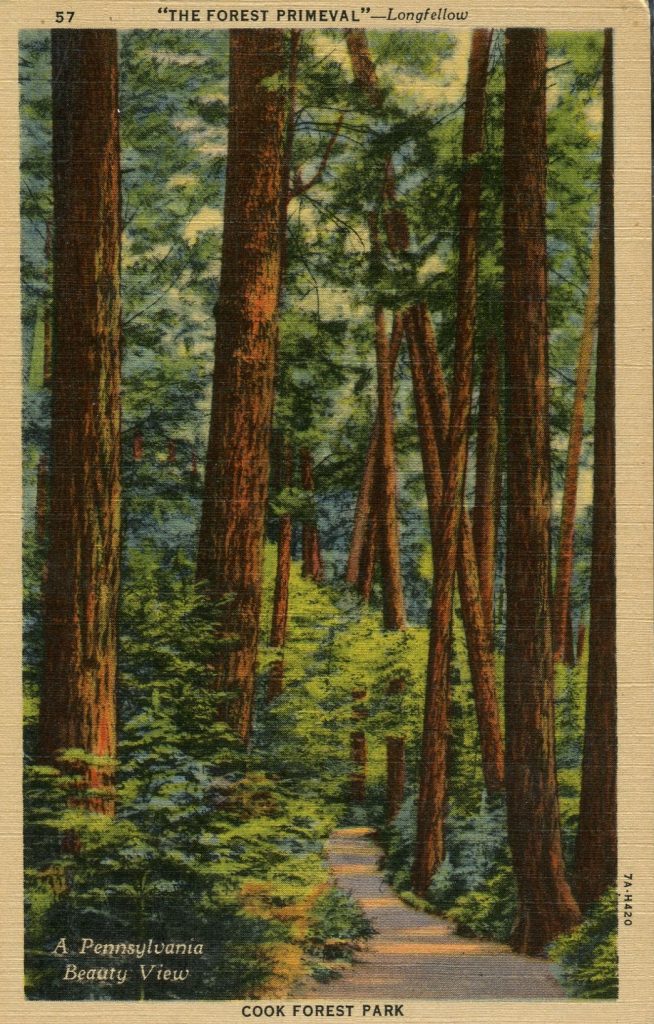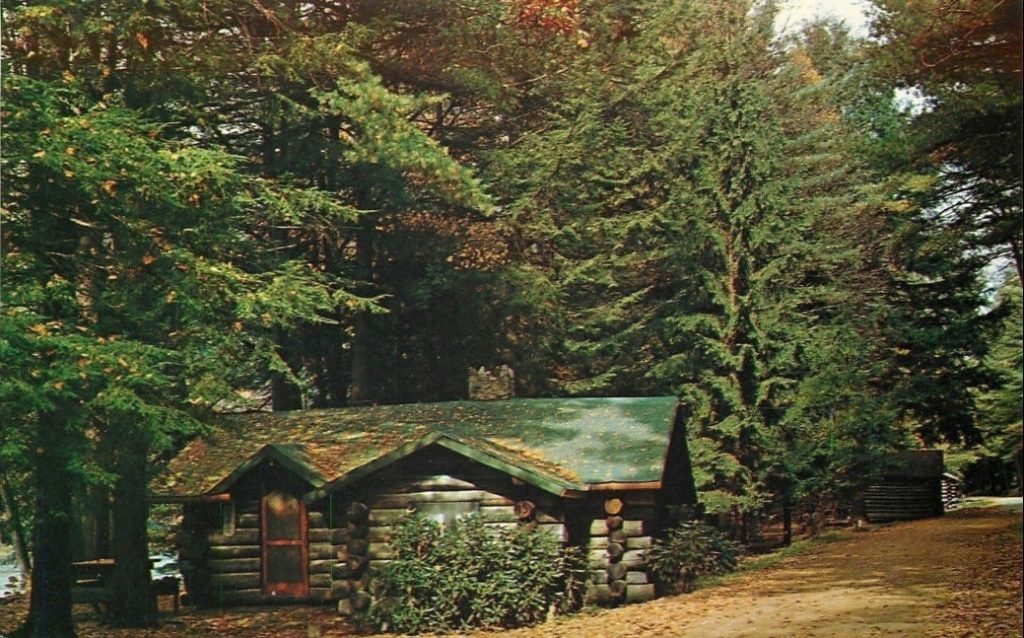Henry Wadsworth Longfellow (1807-1882) wrote in his epic poem Evangeline:
This is the forest primeval. The murmuring pines and the hemlocks,
Bearded with moss, and in garments green, indistinct in the twilight,
Stand like Druids of eld, with voices sad and prophetic,
Stand like harpers hoar, with beards that rest on their bosoms.
We don’t know if he was writing about Cooks Forest State Park, but he could have been.
Cooks Forest State Park is just over 90 miles northeast of Pittsburgh, Pennsylvania. It is a primitive place with state park facilities occupying just over ten acres in the 11,500 acres of old growth white pine and hemlock trees. Cooks Forest of often referred to as the “Black Forest” of North America.

The park is named for the little known John Cook. Cook was the first permanent American settler in the area. He arrived in 1826 to determine the feasibility of building an east-to-west canal along the Clarion River for the Commonwealth of Pennsylvania. He purchased 765 acres and settled here with his wife and ten children in 1828.
On his new property, John built his one-story cabin and the first of many water-driven sawmills. He worked his mills, logged with oxen, rafted logs to Pittsburgh and also engaged in flatboat building for the next thirty years. The legend of John Cook ends with the story that he worked himself to death. He died in 1858.
In the years that followed John Cook’s son, Andrew continued and expanded the Cook enterprises.
Andrew erected three sawmills, a flour mill, a planing mill, a boat scaffold, several dwellings and a store. Andrew also served as a judge and local bank president. About 1870, he built the Cook Homestead (now a bed and breakfast) at the intersection of Route 36 and River Road. Some of John’s and Andrew’s family still live in the homes along River Road. After Andrew’s death, the business was managed as A. Cook & Sons Company.
Facilities in the park include picnicking, cabin rentals, wildlife watch parties, fishing, hunting, hiking, skiing, ice skating and bareback horse riding. Cooks Forest is a veritable wonderland of outdoor sports. It has even served as a Hollywood movie set; in 1946 the Paramount Picture Unconquered was filmed here by Cecil B. DeMille. The co-stars were Gary Cooper and Paulette Goddard.
If you choose to rent a cabin for an overnight stay, it is unlikely that you will be surprised to learn that the cabins were built between 1933 and 1935 by the Civilian Conservation Corps. They are single-room cabins constructed with American chestnut logs.

If scenic overlooks are your thing, two rather spectacular sights await you at Cooks Forest. From the rocks that form the ledge at Seneca Point you can see the Clarion River. The Clarion is a 110 mile long tributary of the Allegheny River that flows through some fairly harsh natural areas of the Allegheny Plateau and is ideal for kayaking and canoeing. It is one of the major rivers within the Ohio River Watershed.
Looking down on the forest is a lot of fun from the top of the 80 foot tall Fire Tower #9. The tower was built in 1929. It is no longer in use but the public is permitted to climb to the top. On clear days the Park Rangers suggest that the horizon is almost twenty miles away.
If you collect national or state park postcards you know that Cooks Forest cards are rare. The Forest Primeval card is a linen from Curt Teich manufactured in 1937; the card showing the American chestnut log cabin in a chrome card from the 1960s. In addition to the two illustration here, I know of only one other card.
